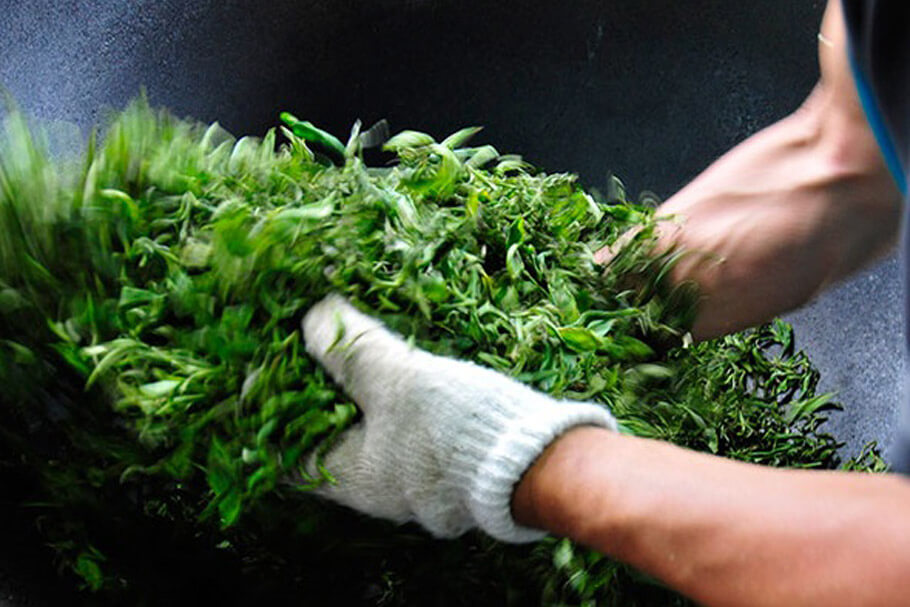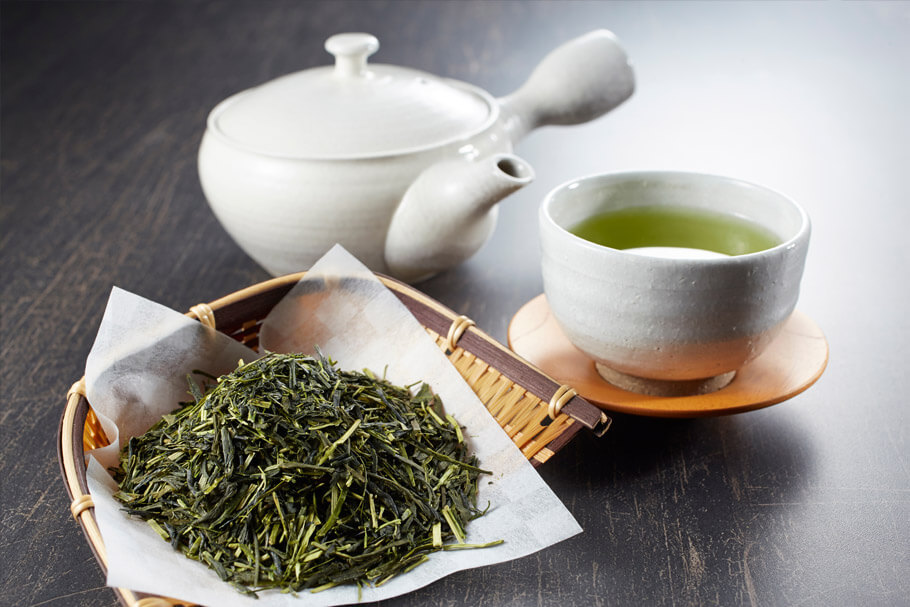

Ah, spring is here — the flowers are blooming, the bees are buzzing, and it’s an optimistic time of fresh starts. It’s also a great time to clear out the clutter (in both your mind and surroundings), enjoy what this season of renewal has to offer, and look forward to new beginnings in your life and in nature.
For Japanese green tea farmers, spring also means the start of a very special harvest: ichibancha. “Spring is a season of anticipation and worry for Japanese green tea farmers before the harvest of their important and precious crop, ichibancha,” says Tomoe Watanabe of SONO ORGANIC, which helps organic tea producers sell their products overseas.
We asked Watanabe and two Japanese green tea farmers — Ochadokoro Sanwa’s Ryuji Kogi and Aoi Tea Company’s Yoshinori Sakakibara — to talk about the special spring harvest that is ichibancha, the best spring teas to drink and how to brew them, and how Japanese green tea can help simplify yourself and your life.

Ichibancha (available in Japanese only) is the first picking of the new tea leaf shoots of the year, which happens between end of March and mid-May, depending on the location and climate of the tea field. The word “ichiban” means “number one” in Japan, and “ichiban-cha” refers to the first harvest. It’s also referred to as the “first flush tea.” Ichibancha is also known as Shincha. The word “shin” means “new” in Japan, so it means “new tea of the season.”
Depending on the region of Japan, there are typically three or four harvest seasons. Along with the all-important ichibancha, there are Nibancha (June or July), Sanbancha (Early August and for only available certain areas of Japan), and Shuutoubancha (September and October).

It’s a special time for Japanese tea farmers, and aficionados of their products, because it yields the highest quality teas. Ichibancha is known to have a milder, sweeter taste compared to teas born in later seasons because they have a significantly higher theanine level — it’s actually said to have three times more theanine than Nibancha teas.
Essentially, it’s the new and best tea of the year and is traditionally picked by hand to ensure the best leaves of the plant are collected for production. “Traditionally, new tea plucked at this time of the year is rich in vitamins and minerals and is said to bring good luck when consumed. It’s known that good tea leaves are usually produced in years when the winter is cold, and spring is warm, creating a strong temperature difference. Winter this year was pretty cold so we are expecting ichibancha to be great,” explains Kogi.
Most of the teas sold throughout the world come from the ichibancha harvest, which is why it’s so important. “It represents the taste of the year. It is the most flavorful and aromatic tea of the year as well. The tea leaves grow quickly so it is the pure professionalism of farmers to know when the right time is to harvest —quality-wise as well as quantity-wise,” notes Watanabe. Around the same time as ichibancha season, Japanese green tea’s traditional cultivation technique, the ooishita cultivation technique, takes place at some of the Japanese green tea fields. This way, it cuts out the sunlight to produce tea leaves with high level of theanine.
For Sakakibara, it’s a particularly special time because they make it a community event with local students. “Most of the ichibancha are handpicked by students and producers, so more effort is put into production, sales, and management. The ichibancha are also very special to us matcha-makers because we have experienced and witnessed this kind of work ourselves as students,” he says.

Ichibancha yields the highest grades of sencha and matcha, as well as gyokuro and tamaryokucha. The opinions on which is truly the best, of course, differ greatly. “Sencha is the best,” says Kogi, while Sakakibara believes the very best way to enjoy the ichibancha is with matcha.
On the matcha side, Sakakibara explains, “Because it is the best leaves of the year, I would recommend drinking it as-is purely to taste the matcha. For those who do not like to drink matcha by itself, you can enjoy it mixed with whipped cream to make a matcha cream, or as an affogato with hot and slightly thick (less water) matcha over vanilla ice cream.”
Kogi recommends the Yutaka Midori and Saemidori varieties of tea leaves grown in Chiran, Kagoshima, Japan. “The Yutaka Midori variety has a slightly sweet aroma like sweet potatoes, less astringency, a rich green color, and a mild umami taste. The Saemidori variety is characterized by its bright green color, elegant aroma, low astringency, and very high umami content. It’s best to brew these teas at 70 to 80 degrees Celsius for best results,” he says.
And then there’s tamaryokucha, which Watanabe recommends. “Tamaryokucha is slightly curled leaf. It’s easy to make this leaf shape with small, thin tea leaves that have just sprouted, so young buds of the ichibancha are used. The small thin leaves are easily burnt when made into sencha, so it works well as tamaryokucha. In order to enjoy the original flavor and aroma of the tea leaves, it’s recommended to brew the tea at a low water temperature for a long time to savor the flavor,” says Watanabe.

Spring is a great time to refresh your routine with different types of Japanese green tea and let your tea journey help you with mindfulness and your self-care practice. When farmers and tea distributors talk about their profession, it truly is from the heart as it is part of their life and soul. “Just looking at the power of Japanese green tea and its fresh greenery can make you feel a little calmer and zen”, says Sakakibara.
Likewise, Kogi says that taking time out for a good cup of tea is a wonderful way to take a break from your busy day. “It’s very relaxing and a small [moment of] happiness in having a cup of Japanese green tea while you can take off your masks and enjoy even in a short time. Having a cup of Japanese green tea is very gentle on the mind and body. It makes me feel mindful”
Spring is a great time to refresh your self-care routine and experiment with new Japanese green tea varieties, plucked perfectly from the spring harvest. Enjoy the spring teas that ichibancha has to offer. Share your #JourneyToSimplifyYou with us on social media at @justteayourself.
For more information, please visit:
— Aoi Tea Company: https://www.aoimatcha.com/
— Ochadokoro Sanwa: http://www.ochadokoro.com/
— SONO ORGANIC: https://sono-organic.com/
Article/Research links:
— https://japanesetea.sg/japanese-tea-pedia/shincha-and-ichibancha/
— https://www.o-cha.net/english/teacha/cultivation/ichibancha.html
— http://www.ocha.tv/how_tea_is_made/tea_picking/ (Available in Japanese only)
Learn All About Japanese Tea: Official Textbook of Japanese Tea Certification